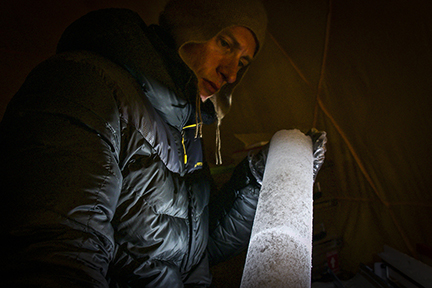
Inter-American Quelccaya Expedition, Peru
In the current state of our changing climate, low latitude alpine glaciers and ice caps are melting at an alarming rate. Within these glaciers resides a unique and well-preserved record of past climate and atmospheric conditions that is vital to expanding our knowledge of modern and future climate change. It is crucial to collect these records before the information is unsalvageable, but extracting ice cores from alpine glaciers is becoming more difficult due to increased glacier melt. Previous records extracted from the Quelccaya ice cap (5670-m a.s.l.) have recorded abrupt climate changes in the Andes and Southern Hemisphere over the past millennia and beyond. However, new technology has emerged since these records were collected with the ability to produce sub-annually resolved records, facilitating a better understanding of climate behavior and meteorological-scale events in the high mountain regions of South America. Aerosols sourced from the Amazon rainforest and transported to the Quelccaya Ice Cap can provide valuable information about atmospheric circulation and climatic changes over the past millennia. Recovering high resolution data, whether from ice cores, snow samples or instrumental records from the tropical glaciers in the Andes, is crucial for developing appropriate mitigation and adaptation policies for water usage and predicting the effects of future climate change. The Quelccaya ice cap is especially important because its meltwater is an essential water resource for local ecosystems along with irrigation, drinking water and power generation for the people living downvalley in both rural and urban areas.

